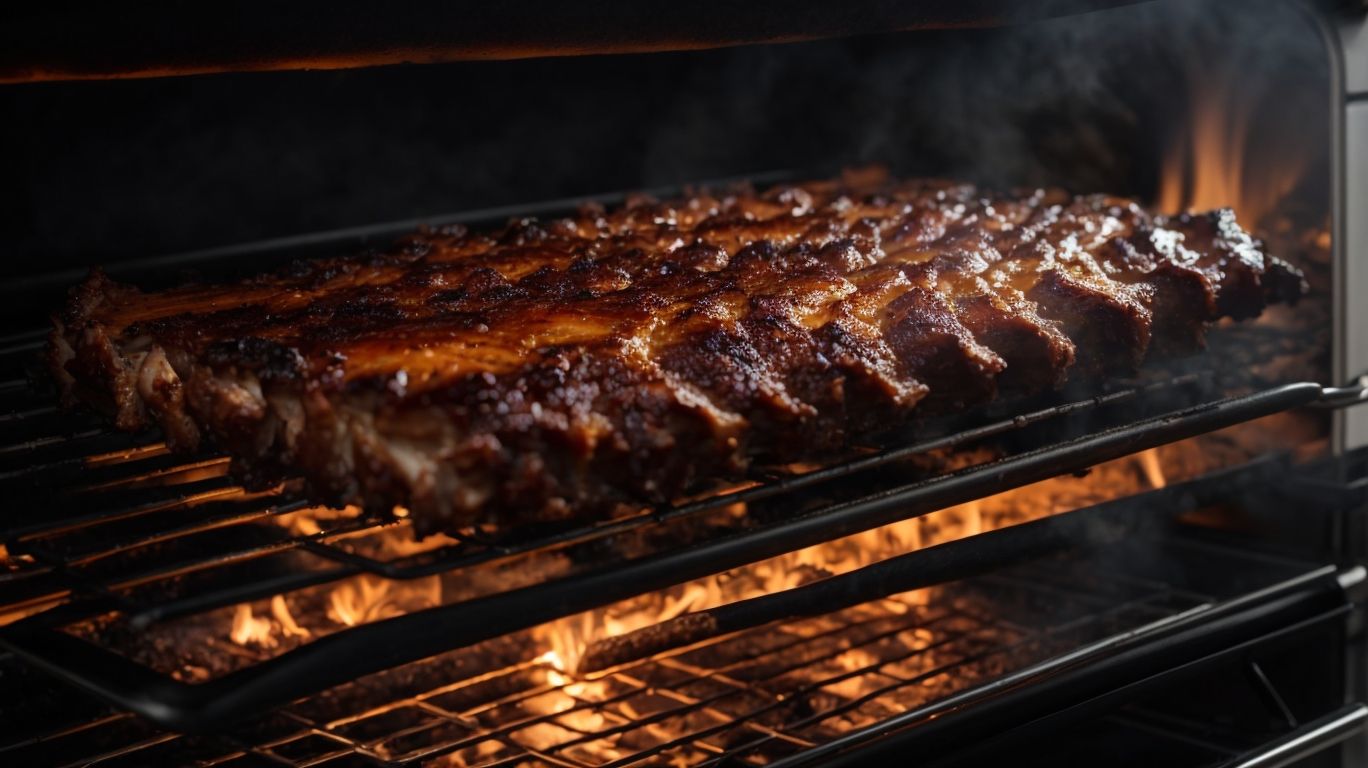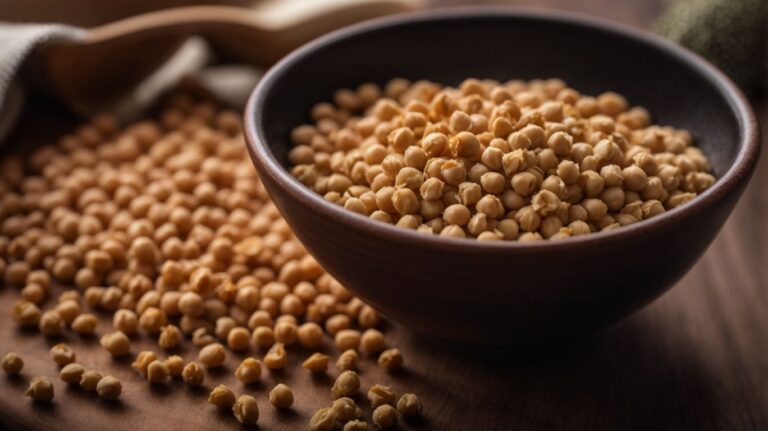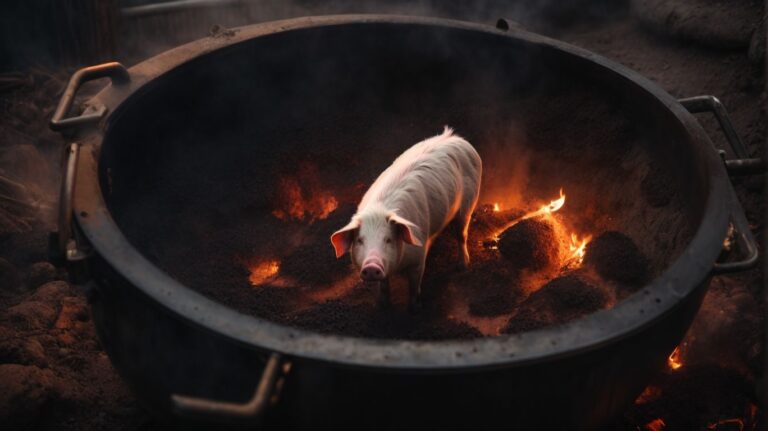How to Cook Ribs Under Broiler?
Looking to master the art of cooking ribs under the broiler?
We explore everything you need to know about using a broiler to cook delicious ribs.
From understanding the different types of ribs to the best ingredients to use, we guide you through the process of preparing and cooking ribs under the broiler.
Stay tuned for expert tips and tricks to ensure perfectly cooked ribs every time. Let’s get started!
Key Takeaways:
What is a Broiler and How Does it Work?
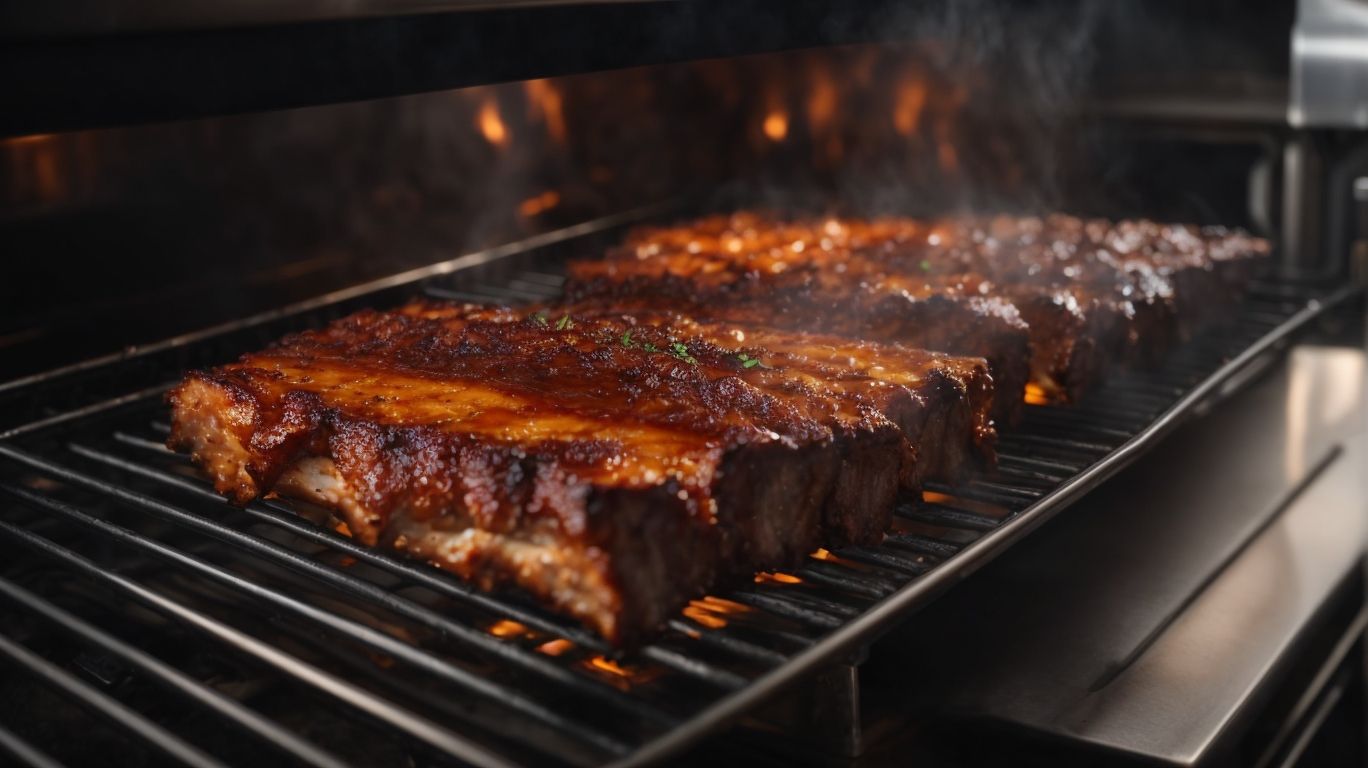
Credits: Poormet.Com – Mason Scott
A broiler is a cooking appliance that uses intense direct heat to cook food quickly, browning and crisping the outer layer while tenderizing the interior.
This cooking method is ideal for achieving that perfect sear on steaks or creating crispy and golden-brown skin on poultry. A broiler essentially functions as an upside-down grill, with the heating element located on top. When using a broiler, it is important to utilize a broiler pan to catch any drippings and prevent flare-ups, ensuring even cooking and easy cleanup. Maintaining the proper temperature is crucial to avoid overcooking or undercooking the food. Whether you’re broiling fish for a light and flaky texture or caramelizing the sugars on a creme brulee for a delightful crust, the broiler’s intense heat helps to achieve optimal texture and flavor in a variety of dishes.
What Type of Ribs are Best for Cooking Under Broiler?
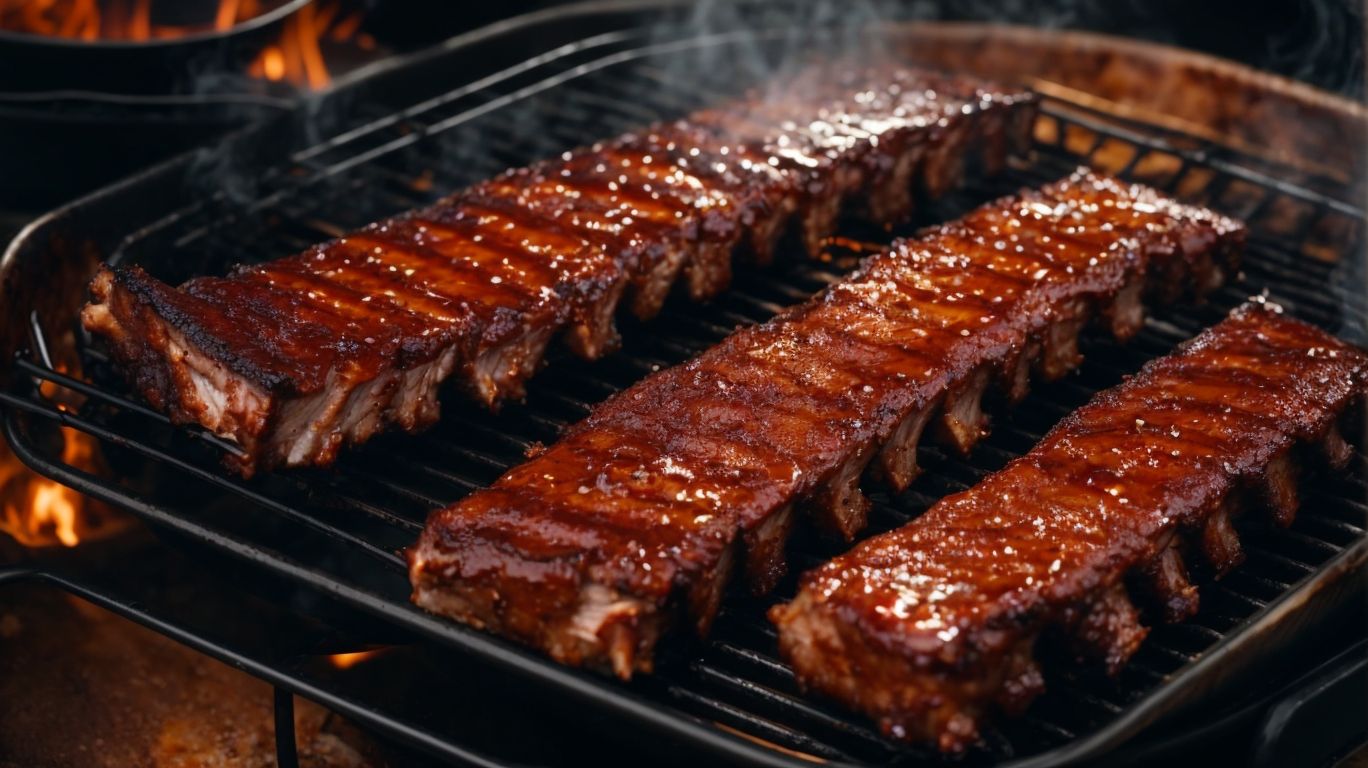
Credits: Poormet.Com – Scott Roberts
When cooking ribs under the broiler, it is essential to choose the right type of ribs that can withstand the high heat and retain their tenderness and flavor.
Among the various rib cuts available, baby back ribs are known for their tenderness, making them an excellent choice for broiling. Their relatively lean meat cooks fairly quickly under the broiler, producing a succulent result that many rib enthusiasts love. On the other hand, spare ribs, with their higher fat content, are perfect for broiling as the extra fat helps keep the meat moist and flavorful during the cooking process. St. Louis style ribs, which are trimmed from spare ribs, offer a balance of meaty richness and fat ideal for achieving that coveted ‘fall-off-the-bone’ texture when broiled.
Baby Back Ribs
Baby back ribs, known for their tenderness and succulent meat, are a popular choice for cooking under the broiler due to their ability to achieve a delightful texture.
The beauty of baby back ribs lies in their ideal meat-to-bone ratio, ensuring each bite is packed with flavor and juiciness. When broiled, the heat caramelizes the ribs in the oven, resulting in a crispy exterior that gives way to a tender and moist interior. This cooking method enhances the natural rich flavors of the ribs, creating a mouthwatering profile that is irresistible to all. Whether you prefer your ribs done with a sweet barbecue glaze or a savory dry rub, broiling accentuates these flavors, making every bite a culinary delight.
Spare Ribs
Spare ribs, with their rich meat content and layers of collagen, can be a flavorful choice for broiling, allowing the meat to absorb the intense heat for optimal cooking results.
In terms of spare ribs, their marbling plays a crucial role in adding depth of flavor and juiciness to the meat during the broiling process. The intramuscular fat within the marbled meat, consisting of collagen, slowly breaks down as the ribs methodically cook under the proper temperature, transforming tough connective tissues into tender, melt-in-your-mouth deliciousness.
St. Louis Style Ribs
St. Louis style ribs, trimmed spare ribs with a rectangular shape, are a versatile option for broiling with their meaty texture that pairs well with various sauces and seasonings.
They are known for their rich marbling, which enhances the flavor profile when cooked. When preparing St. Louis style ribs, they are often seasoned generously to complement their bold taste. These ribs are perfect for marinating overnight in a homemade BBQ sauce to infuse them with a mouthwatering blend of flavors. Whether grilled, smoked, or oven-broiled, the meat composition of St. Louis style ribs makes them ideal for slow cooking methods, ensuring tender, juicy results every time.
What Ingredients Do You Need for Cooking Ribs Under Broiler?
To create mouthwatering ribs under the broiler, you will require a combination of flavorful ingredients such as a dry rub, homemade BBQ sauce, and optional seasonings for added taste.
For the dry rub, consider mixing together brown sugar, paprika, garlic powder, onion powder, chili powder, salt, and black pepper to create a flavorful crust on the ribs during cooking.
When preparing the homemade BBQ sauce, a mixture of ketchup, brown sugar, apple cider vinegar, Worcestershire sauce, mustard, and spices like cayenne pepper or smoked paprika can elevate the dish to a whole new level of deliciousness.
To enhance the overall taste, you can also experiment with adding ingredients such as honey, soy sauce, molasses, or even a splash of bourbon to your BBQ sauce or dry rub.
Dry Rub
A dry rub, comprising a blend of spices and seasonings, serves as a crucial component in flavoring ribs before broiling, enhancing the meat’s taste and texture.
When preparing a dry rub for ribs in the oven, it is essential to strike the right balance between various spices and herbs to create a harmonious flavor profile. The combination of ingredients like paprika, garlic powder, onion powder, and brown sugar can add depth and complexity to the rub, infusing the meat with layers of taste as it cooks. The texture of the dry rub plays a significant role in forming a delicious crust on the ribs, making each bite a flavorful experience.
Barbecue Sauce
A homemade BBQ sauce, crafted from a blend of vinegar, brown sugar, soy sauce, and other savory ingredients, adds a delectable glaze and tangy taste to broiled ribs.
When preparing a homemade BBQ sauce for your ribs recipe, the vinegar provides a sharp acidity, beautifully balanced by the sweetness of brown sugar. Soy sauce adds depth of flavor and a touch of umami, enhancing the overall taste profile of the sauce. Spices like garlic powder, paprika, and cayenne pepper can be introduced to elevate the sauce’s complexity. The beauty of making your favorite barbecue sauce from scratch lies in the flexibility to tailor the ingredients to suit your palate, allowing you to create a truly distinctive and memorable flavor.
Optional Ingredients for Extra Flavor
To elevate the flavor profile of broiled ribs, consider incorporating optional ingredients like Worcestershire sauce, mustard, garlic, and liquid smoke for a unique and savory taste experience.
When preparing ribs under the broiler, the addition of Worcestershire sauce brings a depth of umami flavor, while mustard adds a hint of tanginess that complements the rich meat. Garlic, whether minced or in powder form, infuses a robust aroma and taste to the dish, enhancing its overall complexity.
For those seeking a smokier essence, a few drops of liquid smoke can transform the ribs into a mouthwatering delight, reminiscent of traditional barbecue flavors. These ingredients not only elevate the taste but also provide a perfect balance of sweetness, acidity, and savory notes, making the dish a tantalizing choice for any meal.
How to Prepare Ribs for Broiling?
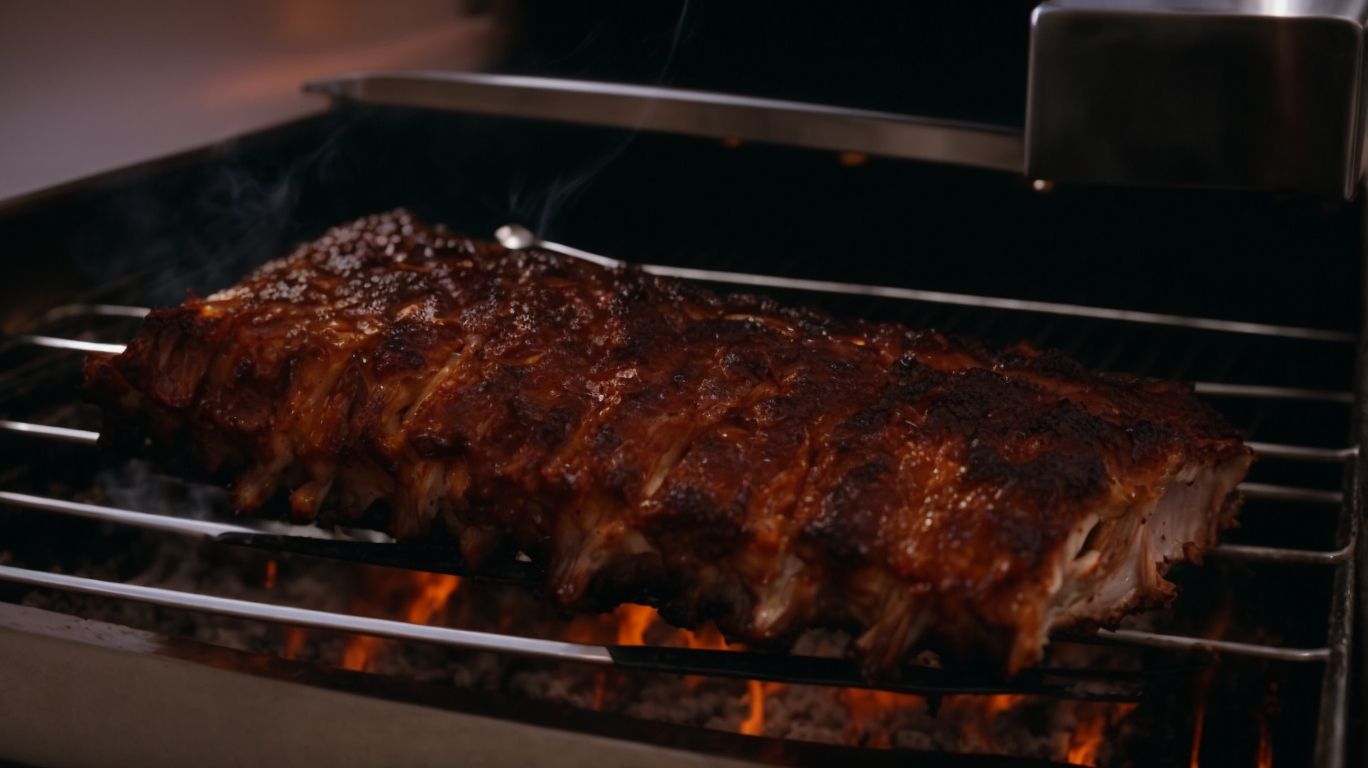
Credits: Poormet.Com – Willie Baker
Before broiling ribs, it is crucial to properly prepare them by removing the membrane and seasoning them with a dry rub to enhance the flavors and textures during cooking.
One of the essential steps in preparing ribs for broiling is to ensure thorough membrane removal, as this connective tissue can hinder the penetration of flavors and result in a less tender texture. Removing the membrane allows the spices and seasonings from the dry rub to fully infuse into the meat, creating a more flavorful and succulent dish.
Applying a generous amount of dry rub evenly onto the ribs helps create a delicious crust and enhances the overall taste profile.
Remove Membrane
Removing the membrane from ribs is a crucial step before broiling to ensure tender meat and proper seasoning absorption.
This thin, translucent membrane on the back of the ribs can become tough and chewy when cooked, detracting from the overall dining experience. By peeling off this membrane, you allow the marinade and seasonings to penetrate deeper into the meat, resulting in more flavor in every bite. Removing the membrane helps the ribs cook more evenly, preventing them from becoming rubbery or soggy. To make this process easier, lay the ribs on a sheet pan lined with aluminum foil for quick cleanup.
Season Ribs with Dry Rub
Seasoning ribs with a dry rub is a vital preparation step before broiling, enhancing the flavor profile and creating a savory crust on the meat.
When applying a dry rub to rib meat, ensure that the seasoning is evenly spread across the surface. This step is crucial in guaranteeing that every bite bursts with flavorful goodness.
The ribs method involves gently massaging the dry rub mixture into the meat, allowing the spices to penetrate and infuse throughout. This creates a harmonious blend of flavors that seep into the meat as it cooks.
Choose a balance of spices that complement the natural richness of the ribs, such as paprika, garlic powder, brown sugar, and cayenne pepper. Each ingredient plays a crucial role in elevating the taste profile, adding depth and complexity to every bite.
How to Cook Ribs Under Broiler?
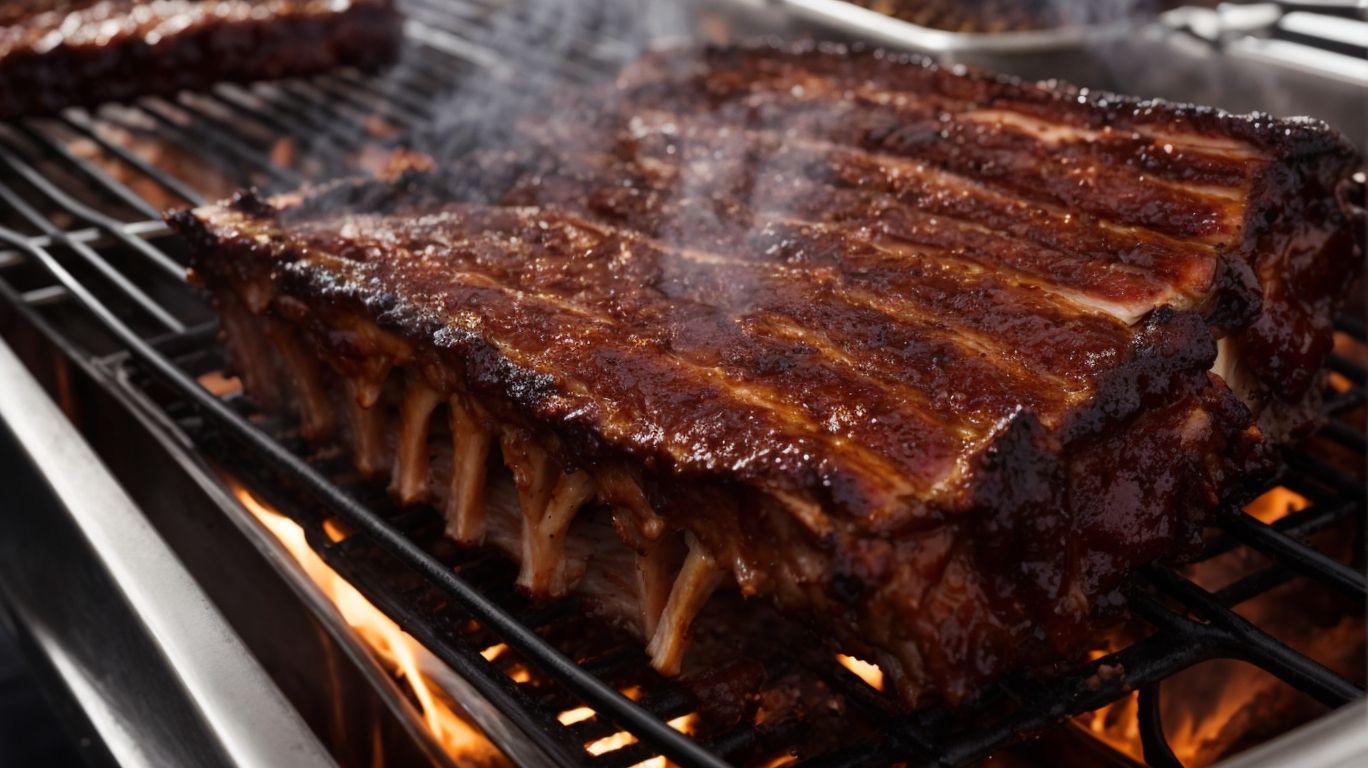
Credits: Poormet.Com – Kenneth Sanchez
Cooking ribs under the broiler requires precise timing and temperature control to achieve the perfect balance of tenderness and charred exterior.
When preparing ribs under the broiler, it is crucial to preheat the broiler to a high setting, typically around 500 degrees Fahrenheit, to ensure the meat gets a nice sear quickly. Place the seasoned ribs on a broiler pan or a wire rack set on a baking sheet lined with foil to catch drippings and make cleanup easier.
Broiling ribs usually takes about 6-8 minutes per side, depending on the thickness of the meat and the desired level of char. To ensure even cooking, you can rotate the ribs halfway through the cooking process.
Use a meat thermometer to check the internal temperature of the ribs; they are done when they reach an internal temperature of 145 degrees Fahrenheit for pork ribs. Let the ribs rest for a few minutes before serving to allow the juices to redistribute for optimal flavor.
Preheat the Broiler
Preheating the broiler is a crucial step before cooking ribs to ensure even heat distribution and efficient cooking results.
By preheating the broiler, you create a perfect setting for broiled BBQ ribs to cook to perfection. This ensures that the meat is cooked evenly, capturing all the flavors and juices, resulting in a delicious and tender outcome. Maintaining the right temperature in the broiler guarantees that the ribs are cooked consistently throughout, avoiding any raw or overcooked spots.
Place Ribs on Broiler Pan
Positioning the ribs on a broiler pan ensures proper heat exposure and allows excess fats to drip away during the cooking process.
One key benefit of using a broiler pan is the incorporation of elevated grates, which help in promoting even cooking. By lifting the ribs off the surface, the heat circulates more efficiently, resulting in a more consistent cook. The dripping fat not only prevents sogginess but also reduces the risk of flare-ups. The texture achieved when using a broiler pan is often superior, with a crispy exterior while maintaining a juicy interior. This method is undoubtedly one of the best ways to get your ribs done just right.
Broil Ribs for 10-15 Minutes Per Side
Broiling ribs for 10-15 minutes per side allows for even cooking, caramelization of sauces, and the development of a flavorful crust.
When broiling ribs, it’s essential to flip them halfway through the cooking process. Flipping the ribs ensures that they cook uniformly on both sides, preventing any potential unevenness. This step also helps to achieve that sought-after ‘fall-off-the-bone’ tenderness by allowing the heat to penetrate and break down the connective tissues evenly.
Monitoring the temperature during broiling is crucial for optimal results. It ensures that the ribs reach the desired doneness without overcooking or undercooking. The ideal internal temperature for perfectly cooked ribs usually ranges between 190-203°F, depending on the preferred level of doneness.
By flipping the ribs and keeping a close eye on the temperature, you can elevate your rib-cooking game and impress your guests with succulent, perfectly cooked ribs every time.
How to Finish Ribs with Barbecue Sauce?
Adding a final touch of barbecue sauce and broiling the ribs for a few more minutes helps to caramelize the sauce, infusing the ribs with a sticky and flavorful glaze.
When broiling ribs in the oven, the key to achieving that mouthwatering caramelization is to apply the barbecue sauce generously but evenly. This step not only adds a beautiful glaze but also intensifies the flavors, creating a delicious contrast of sweet and savory notes. The high heat of the broiling process helps the sugars in the sauce to caramelize, adding depth and complexity to the overall taste.
Brush Ribs with Barbecue Sauce
Brushing the ribs with barbecue sauce evenly coats them with a savory glaze, setting the stage for the final broiling step to enhance the flavor profile.
When applying the barbecue sauce, it’s crucial to ensure even coverage across all sides of the ribs. This can be achieved by using a basting brush to gently spread the sauce evenly. Properly coating the ribs not only enhances the taste but also helps in creating that classic sticky texture that makes ribs so irresistible. The technique of glazing the ribs with sauce significantly impacts the overall flavor retention, as it forms a caramelized layer during the broiling process, giving the ribs a deliciously charred and rich taste.
Broil for 5 More Minutes
Broiling the sauced ribs for an additional 5 minutes allows the barbecue sauce to caramelize, creating a sticky and flavorful finish on the ribs.
This final broiling step is crucial as it not only enhances the taste but also impacts the overall texture of the dish. When the ribs are placed under the broiler, the high heat causes the sauce to bubble and thicken, intensifying its flavor profile. The additional cooking time under the broiler also leads to caramelization, resulting in a beautiful darkened color and a depth of flavor that permeates through every tender morsel of the meat.
Tips for Perfectly Cooked Ribs Under Broiler
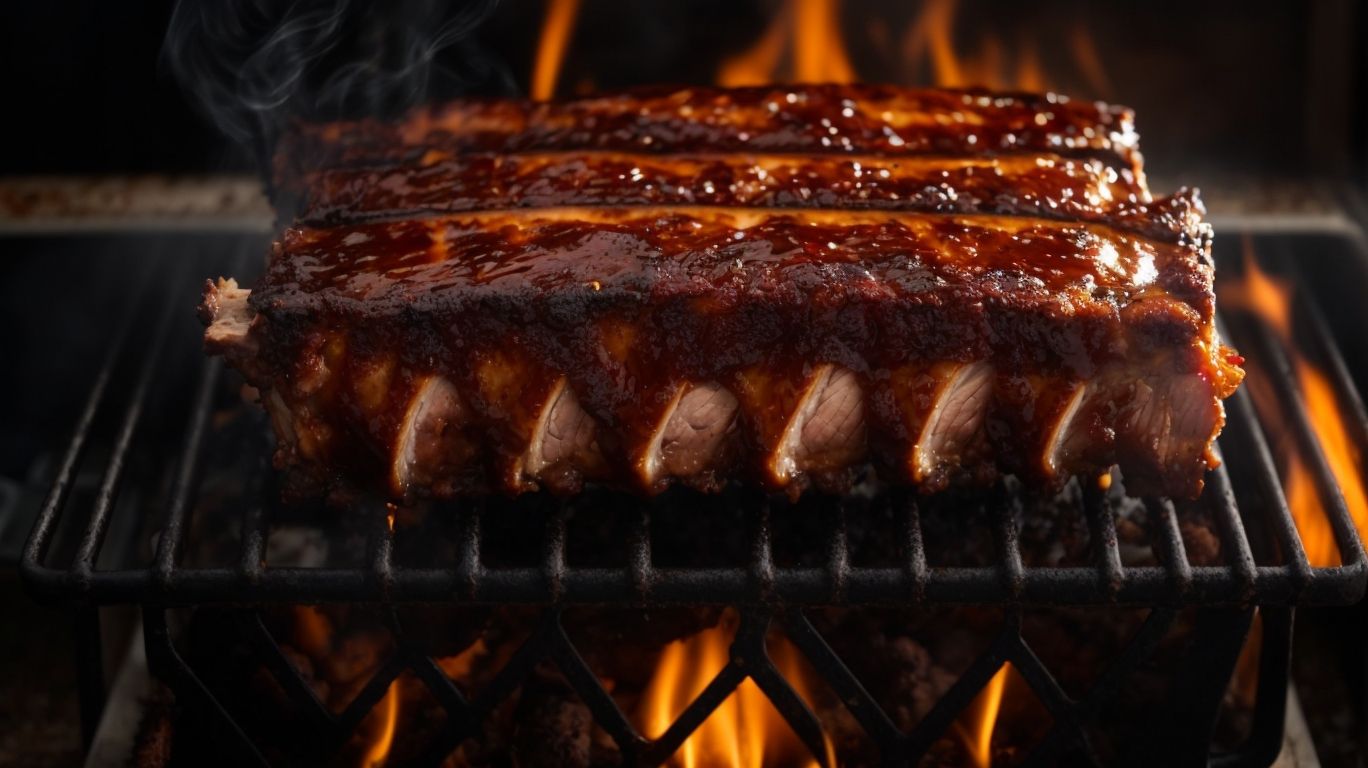
Credits: Poormet.Com – Elijah Lewis
Achieving perfectly cooked ribs under the broiler requires attention to detail, proper timing, and temperature control to ensure a tender, juicy, and flavorful outcome.
Start by choosing high-quality ribs; baby back or spare ribs work great under the broiler. Before cooking, marinate the ribs with your preferred seasonings or rub for at least a few hours, or ideally overnight, to enhance the flavors. Once ready to cook, preheat the broiler to high and place the ribs on a lined baking pan.
- Baste the ribs regularly with a delicious sauce mixture to keep them moist during cooking.
It’s crucial to monitor the temperature of the ribs, ensuring they reach an internal temperature of 145°F for safe consumption, but also maintaining the desired tenderness. Use a meat thermometer to check the doneness, and adjust the broiler settings if needed. Let the ribs rest for a few minutes before serving to allow the juices to redistribute for maximum flavor. Enjoy your deliciously broiled ribs straight from the oven!
Conclusion and Serving Suggestions
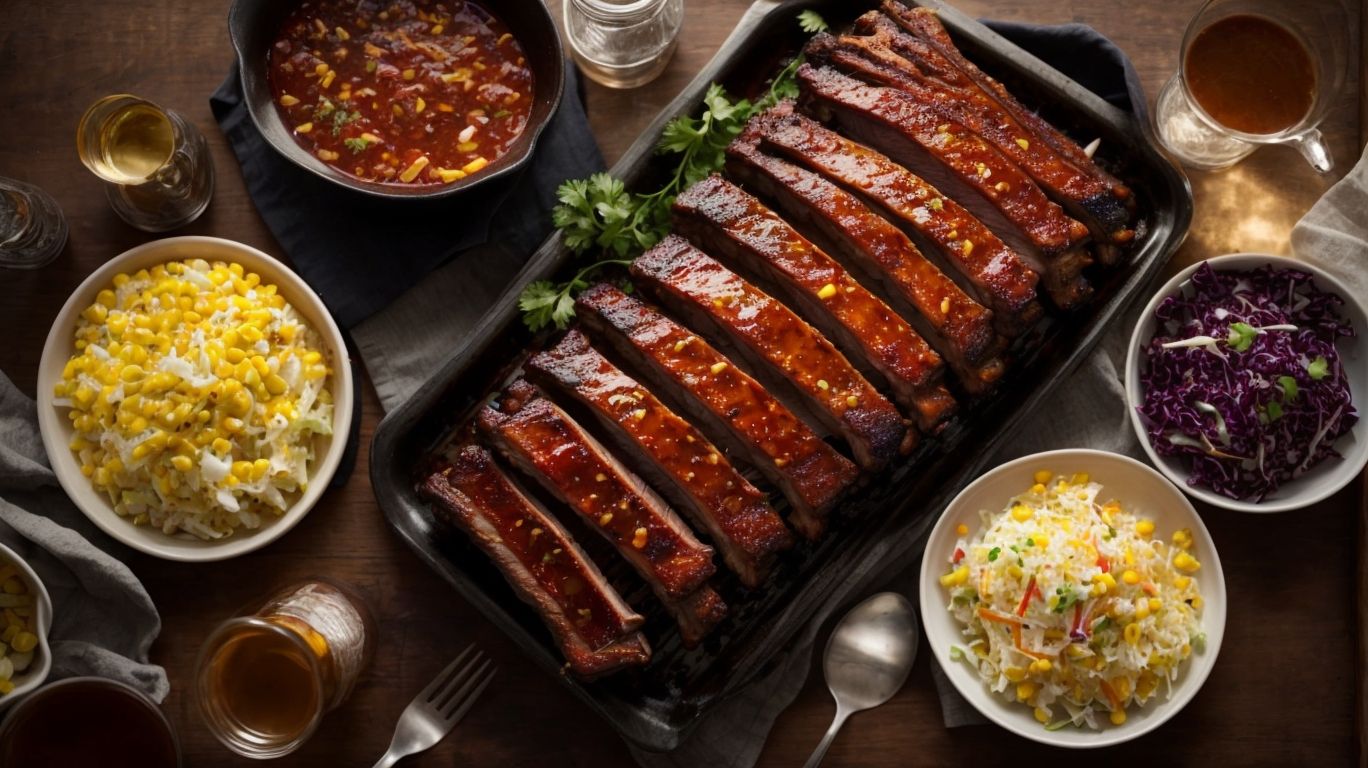
Credits: Poormet.Com – Jose Hill
Mastering the art of cooking ribs under the broiler can lead to delectable dishes that showcase a perfect balance of tenderness, flavor, and visual appeal.
The broiler method for cooking ribs is not only efficient but also imparts a lovely charred exterior that enhances the overall taste of the dish. Homemade BBQ sauce pairs exceptionally well with broiler-cooked ribs, offering a sweet and savory flavor profile that complements the smoky notes from the broiling process.
When serving broiler-cooked ribs, consider garnishing with fresh herbs like parsley or chives to elevate the presentation. Pair the ribs with classic sides such as cornbread, coleslaw, or grilled vegetables for a complete and satisfying meal experience.

